The Art of Narration as a Core of Classical Education
In our most recent faculty development meeting (held monthly), ACA teachers discussed how to better implement the art of narration in their classrooms as a central teaching practice. The ideas we exchanged were encouraging, and I'd like to share why.
Narration is essentially story-telling. But it's also the ancient and classical practice of retelling what has been heard from the teacher. This simple practice of a student making knowledge his own by retelling it in story form is at the heart of learning, and of making knowledge stick. "Children narrate by nature," said famed educator Charlotte Mason. "Narrating is an art, like poetry-making or painting, because it is there, in every child's mind, waiting to be discovered, and is not the result of any process of disciplinary education." And according to Jason Barney in reference to the Learning Scientists, researchers found that "retrieval practice" (i.e., narration) is "the gold standard . . . the single most important activity to engage in" for strategies that work to improve learning.
While not at odds with other learning practices, narration encourages a holistic, ownership-based strategy to acquiring and keeping knowledge. Students are taught to listen carefully -- very carefully -- and then to retell as much as they can. They can do this orally or via writing, depending on their age and the assignment. The point of narration is not to require the student to remember everything they've just heard or read, but to remember as much of it as they can, in story form, via their own memories. This process is difficult, yet enjoyable and natural. It takes time. Students are trained to think broadly, cohesively, and naturally about what they've learned, instead of processing in chunks, fragments, or from terminology alone.
Implementation is simple and low-key, even if mentally intensive. The idea is to help students of all ages think less in terms of "what happened exactly," or "what precise year did this occur?" and more in terms of "what's next?" This natural training in self-expression and retelling will then promote more natural ownership of details, such as dates and quotes, as time goes on.
I mentioned that our faculty training discussion was encouraging. This is because the art of narration is such an easy thing to implement (little by little over time), and is such a great way in which parents can partner with teachers. You can help your kids of any age practice narration anytime! ACA's teachers are eager to continue teaching your kids via the tried-and-true classical methods we already know so well, but they also continue to look forward to steadily developing the art of narration in their students, for the glory of God and the good of all people.
